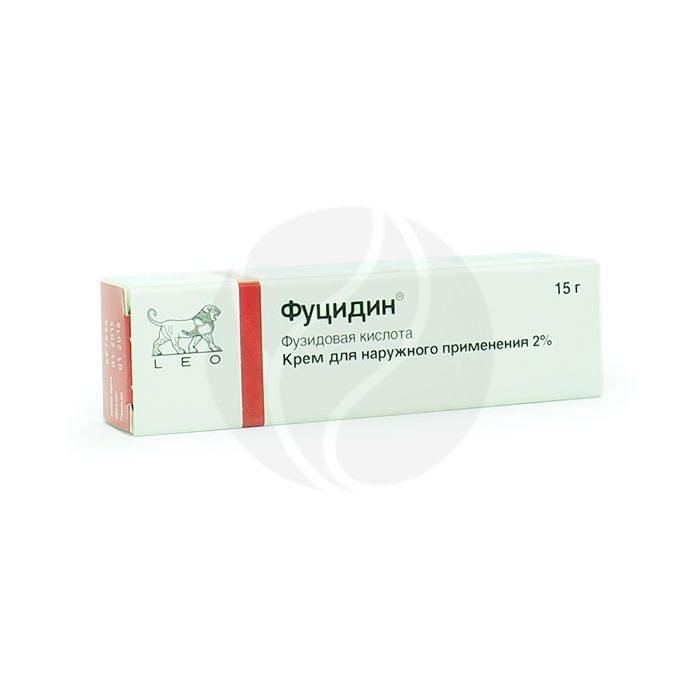Fucidin cream 2%, 15 g
Expiration Date: 11/2025
Russian Pharmacy name:
Фуцидин крем 2%, 15 г
Skin infections caused by bacteria susceptible to fusidic acid.
Outwardly.
Adults and children from birth to 18 years old. Apply to the affected skin with a thin layer 3-4 times a day.
When using gauze dressings, the frequency of application can be reduced to 1-2 times a day.
The duration of treatment depends on the form and severity of the disease and averages 7-14 days.
| Cream for external use | 1 g |
| active substance: | |
| fusidic acid hemihydrate (in terms of anhydrous acid) | 20.4 mg |
| (equivalent to 20 mg of anhydrous fusidic acid) | |
| excipients: cetyl alcohol - 111 mg; glycerol 85% - 111 mg; liquid paraffin (contains about 10 ppm alpha-tocopherol) - 111 mg; soft white paraffin (contains about 10 ppm alpha-tocopherol) - 56 mg; polysorbate 60 - 56 mg; hydrochloric acid - qs to pH 5; potassium sorbate - 2.7 mg; butylhydroxyanisole - 0.04 mg; water - about 531 mg |
| Ointment for external use | 1 g |
| active substance: | |
| sodium fusidate | 20 mg |
| excipients: lanolin (contains no more than 200 ppm butylhydroxytoluene) - 46 mg; cetyl alcohol - 4 mg; liquid paraffin (contains about 10 ppm alpha-tocopherol) - 140 mg; soft white paraffin (contains about 10 ppm alpha-tocopherol) - 790 mg |
Hypersensitivity to the components of the drug.
With care: pregnancy, lactation.
Fucidin is an acteriostatic antibiotic. It belongs to the group of fusidins, antimicrobial compounds, the mechanism of action of which is associated with a violation of protein synthesis in a bacterial cell.
Gram-positive bacteria and gram-negative cocci are sensitive to fusidic acid, for example, Staphylococcus aureus, Staphylococcus epidemridis (including methicillin-resistant strains), Nocardia asteroides, Corynebacterium minutissimum, Streptococcus pyogenes.
Not active against Escherichia coli, Salmonella spp., Proteus spp., As well as protozoa and fungi.
Side effects:
These phenomena are rare and expected in about 5% of patients.
- Eye reactions: irritation of the conjunctiva.
- Allergic phenomena: Quincke's edema, urticaria, eczema.
- Dermatological phenomena: periorbital edema, skin irritation, eczema, skin rash and itching, dry skin, contact dermatitis, erythema.
Storage conditions:
The drug must be kept out of the reach of children. The cream is stored at temperatures up to 25 ? C. The ointment is stored at temperatures up to 30 ? C.
Special instructions:
Do not apply the drug to the skin of the eyelids, as fusidic acid irritates the tissues of the conjunctiva.
The cream contains butylhydroxyanisole, potassium sorbate and cetyl alcohol, and the ointment contains cetyl alcohol and lanolin. These substances are the cause of the development of local allergic skin phenomena.
Butylhydroxyanisole can also cause irritation of the mucous membranes and eyes.
When using fusidic acid, the development of bacterial resistance is not excluded. Long-term or repeated use can increase the risk of antibacterial resistance.
The effect of the drug on the ability to drive a car was not revealed.

